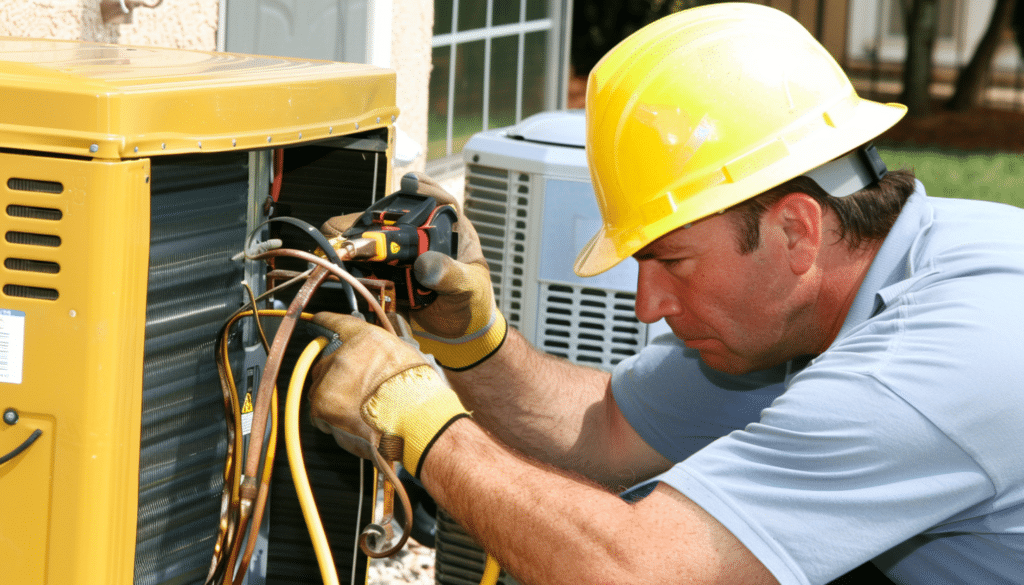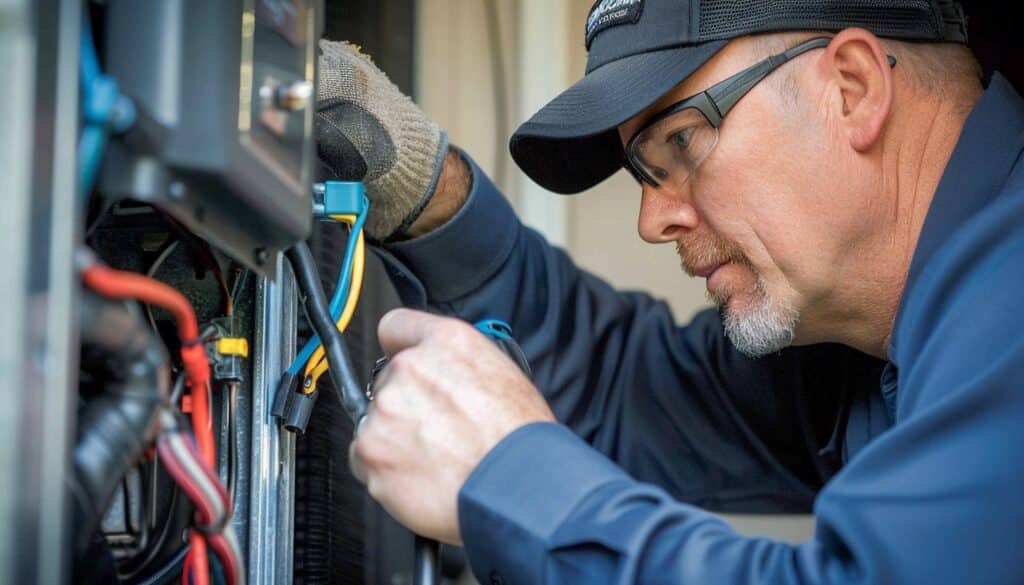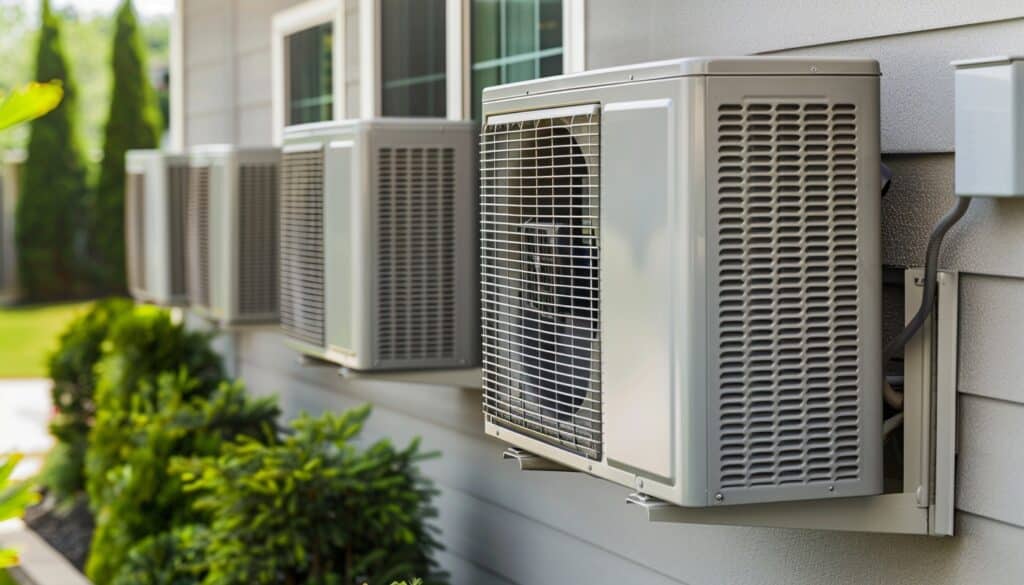AC Running But Not Cooling? Here’s What to Check
Table of Contents
- Introduction: The Common Problem of AC Running but Not Cooling
- Understanding the Basics of How an AC Works
- Possible Reasons Why Your AC is Running but Not Cooling
- How to Diagnose and Fix Your AC Issues
- When to Call a Professional
- FAQs: AC Running but Not Cooling
- Conclusion
Introduction: The Common Problem of AC Running but Not Cooling
There’s nothing more frustrating on a hot day than discovering your air conditioning unit is running, but not cooling your home. This is a common issue that can result from various underlying problems, each requiring a different approach to resolve. Understanding the potential causes and solutions will not only help you stay cool but also ensure the longevity and efficiency of your AC running system.

In this blog, we’ll delve deep into the reasons why your AC is running but not cooling and guide you through steps to diagnose and address these issues. By the end, you’ll know when it’s something you can fix yourself and when it’s time to call in the professionals at Wintri, your trusted HVAC experts.
Understanding the Basics of How an AC Works
Before diving into the specific reasons why your AC might be running but not cooling, it’s crucial to understand the basics of how an air conditioning system works. This will give you a better perspective on what might go wrong and why.
An air conditioning unit primarily functions by removing heat from the indoor air and releasing it outside. Here’s a simplified breakdown of the process:
- Evaporation: The AC pulls warm air from inside your home, passing it over the evaporator coils containing refrigerant. The refrigerant absorbs the heat, cooling the air, which is then circulated back into your home.
- Compression: The refrigerant, now heated, travels to the compressor outside, where it is pressurized, turning into a hot, high-pressure gas.
- Condensation: The hot refrigerant gas then moves to the condenser coils, where it releases the absorbed heat into the outside air, cooling back into a liquid.
- Expansion: Finally, the refrigerant flows through the expansion valve, cooling further as it prepares to repeat the cycle.
When any part of this process is disrupted, your AC might run without effectively cooling your home.

Possible Reasons: AC Running but Not Cooling
Several factors could cause your AC to run without cooling. Understanding these potential issues is the first step in diagnosing and fixing the problem. Let’s explore some common causes:
1. Dirty Air Filters
Dirty air filters are one of the most common reasons for an AC running without cooling. Air filters trap dust, pollen, and other particles, preventing them from entering your home. Over time, these filters can become clogged, restricting airflow and reducing the system’s efficiency.
Signs of a dirty air filter:
- Reduced airflow from vents
- Increased dust in your home
- Higher energy bills
Solution: Regularly check and replace your air filters every 1-3 months, depending on usage. This simple maintenance task can significantly improve your AC’s performance.
2. Refrigerant Leaks
Refrigerant is crucial to the cooling process in your AC. A leak in the refrigerant line can cause your system to run but not cool effectively. Unlike fuel in a car, refrigerant is not consumed; a low refrigerant level indicates a leak.
Signs of a refrigerant leak:
- AC takes longer to cool your home
- Hissing or bubbling noises near the AC unit
- Ice buildup on the refrigerant line
Solution: If you suspect a refrigerant leak, it’s important to contact a professional HVAC technician. Refrigerant handling requires specific certifications due to environmental regulations and safety concerns.

3. Faulty Thermostat Settings
Sometimes, the problem isn’t with the AC unit itself but with the thermostat settings. If your thermostat isn’t set correctly, your AC might run without cooling your home.
Common thermostat issues:
- Thermostat set to “ON” instead of “AUTO”
- Incorrect temperature settings
- Dead or low batteries in a digital thermostat
Solution: Check your thermostat to ensure it’s set to “AUTO,” which means the fan will only run when the AC is cooling. Make sure the temperature is set lower than the current room temperature. Replace batteries if necessary.
4. Clogged Condenser Coils
The condenser coils are located in the outdoor unit and play a crucial role in releasing the heat absorbed from your home. If these coils are clogged with dirt and debris, they can’t efficiently dissipate heat, causing your AC to struggle with cooling.
Signs of clogged condenser coils:
- Warm air blowing from vents
- Higher than normal energy bills
- AC unit running constantly without shutting off
Solution: Regularly clean the area around the outdoor unit. A professional HVAC technician can perform a more thorough cleaning if needed.
5. Blocked Vents and Ductwork
Blocked or clogged ducts can severely reduce your AC’s ability to cool your home. Dust, debris, or even pests can block the airflow, leading to uneven cooling or no cooling at all.
Signs of blocked vents and ducts:
- Uneven cooling in different rooms
- Weak airflow from vents
- Strange noises coming from the ducts
Solution: Ensure that all vents are open and unobstructed by furniture or other objects. If you suspect a blockage within the ductwork, contact a professional for a thorough inspection and cleaning.
6. Electrical Issues
Sometimes, the problem might be electrical, involving faulty wiring or circuit breakers. These issues can prevent your AC from running correctly or cooling efficiently.
Common electrical issues:
- AC unit not turning on at all
- Frequent tripping of circuit breakers
- Burning smell from the AC unit
Solution: Electrical issues should be handled by a professional HVAC technician to avoid risks such as electrical shocks or fire hazards.

How to Diagnose and Fix Your AC Issues
Diagnosing why your AC is running but not cooling can be a systematic process. Here’s a step-by-step guide to help you troubleshoot and potentially fix the issue:
- Check the Thermostat: Ensure it’s set to “AUTO” and the temperature is correctly set.
- Inspect the Air Filter: Replace if dirty or clogged.
- Examine the Outdoor Unit: Clear away any debris around the condenser unit.
- Look for Refrigerant Leaks: If you suspect a leak, call a professional.
- Check Vents and Ducts: Make sure they are not blocked and air is flowing freely.
- Listen for Unusual Noises: This could indicate a mechanical or electrical issue.
If these steps don’t resolve the problem, it may be time to call in the experts at Wintri.
When to Call a Professional
While some AC issues can be resolved with basic troubleshooting, others require the expertise of a professional HVAC technician. Here are signs that you should call a professional:
- Persistent issues: If your AC still isn’t cooling after basic troubleshooting.
- Refrigerant problems: Suspected leaks or low refrigerant levels.
- Electrical concerns: Frequent circuit breaker trips or burning smells.
- Mechanical failures: Unusual noises or parts not functioning correctly.
At Wintri, our team of certified HVAC professionals is equipped to handle any AC issue with precision and care. We offer comprehensive diagnostic services, repairs, and maintenance to keep your AC running smoothly.

FAQs: AC Running but Not Cooling
Q1: Why does my AC run but not cool the house?
A: Several factors could be at play, including dirty air filters, refrigerant leaks, clogged condenser coils, or thermostat issues. Basic troubleshooting steps can often identify the problem, but persistent issues may require professional attention.
Q2: Can I fix my AC by myself?
A: Some issues, like changing the air filter or resetting the thermostat, can be handled by homeowners. However, more complex problems like refrigerant leaks or electrical issues should be left to professionals to ensure safety and proper repair.
Q3: How often should I replace my AC filter?
A: Ideally, replace your AC filter every 1-3 months, depending on usage and environmental factors like pets or allergies.
Q4: What should I do if my AC is leaking water?
A: Water leaks can be caused by clogged condensate drains or frozen evaporator coils. Turn off the AC and contact a professional to inspect and fix the issue.
Q5: How can I prevent my AC from running without cooling?
A: Regular maintenance, such as changing filters, cleaning condenser coils, and scheduling annual professional check-ups, can prevent most issues that cause an AC to run without cooling.
Conclusion
When your AC is running but not cooling, it can be a stressful and uncomfortable experience, especially during the sweltering summer months. However, understanding the possible causes and how to address them can help you restore comfort in your home. Regular maintenance and timely repairs are key to ensuring your AC system works efficiently and effectively.
For persistent or complex issues, don’t hesitate to contact the professionals at Wintri. Our experienced technicians are ready to provide you with top-notch HVAC services, ensuring your home remains cool and comfortable all year round.

